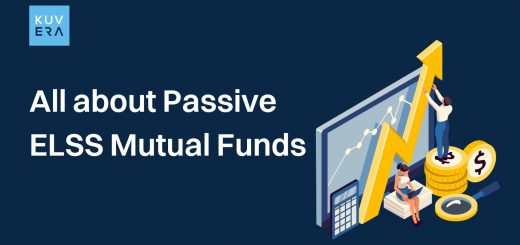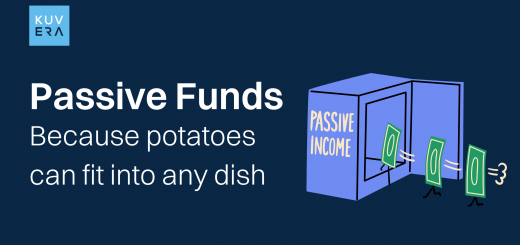A mutual fund is a financial vehicle that pools money from several participants to invest in securities such as stocks, bonds, money market instruments, and other assets. Mutual funds are managed by professionals who utilize the fund’s assets to generate financial gains or income for the fund’s investors. The mutual fund portfolio is built and maintained to accomplish the investment goals indicated in the prospectus.
An equity mutual funds scheme is a mutual fund scheme that invests its assets in stocks of various firms depending on the underlying scheme’s investment aim. These funds are an excellent choice for capital appreciation since they have the potential to create long-term wealth.
What is an equity mutual fund?
An equity fund is a mutual fund that primarily invests in stock companies. According to current Securities and Exchange Board of India (SEBI) Regulations, an equity mutual fund scheme must invest at least 65% of its assets in stocks and equity-related securities.
An equity fund might be actively or passively managed. Passively managed index funds and Exchange Traded Funds (ETFs) equity mutual funds are classified primarily by company size, portfolio holdings, investing strategy, and geographic location. The market capitalization of an equity fund determines its size, while the investing process, as shown by the fund’s stock holdings, is also used to categorize equity mutual funds.
- Equity funds may be classified as domestic (investing only in Indian corporate equity) or foreign (investing in stocks of overseas companies). These funds might be marketwide, regional, or nation-focused. Sectoral funds are equity funds that focus on specific areas such as healthcare, commodities, and real estate.
- Equity funds are suitable investment vehicles for people new to financial investing or who do not have a significant chunk of money to invest. The vast majority of individuals can afford to invest in stock index funds.
- Equity funds are ideally suited for small individual investors due to the lower risk associated with portfolio
- diversification and the relatively modest amount of cash necessary to buy shares in an equity fund. To attain a comparable level of risk reduction via diversification of a direct stock ownership portfolio, an individual investor would need a considerable amount of investment money. An equity fund may diversify by pooling small investors’ funds without imposing hefty capital requirements on each member.
The fund’s price is determined by the net asset value (NAV) minus the fund’s liabilities determines the fund’s price. A more diversified fund implies that an unfavorable price movement in a single company has less impact on the whole portfolio and the equity fund’s share price.
Professional portfolio managers with extensive expertise run equity funds, and their previous performance is available to the public. The federal government rigorously monitors equity funds’ transparency and reporting requirements.
Use Kuvera for all your Equity Mutual Funds and stock investments, and see your hard-earned money grow.
How do best-performing mutual funds work?
When assessing a mutual fund’s performance, it is important to understand that it’s always expressed in terms of overall returns. This refers to the mutual fund’s net asset value (NAV), capital gains distributions, and dividends over a fixed period of time. On the Kuvera platform, you can check every mutual fund we have listed for its NAV and past performance. You can also compare it with other mutual fund options.
Typically, a mutual fund delivers money to investors in three ways:
- Dividends on stocks and interest on bonds held in the fund’s portfolio produce income. When a fund pays out all of its money to fund owners over a year, this is referred to as a distribution. Funds often provide investors the option of receiving a dividend check or reinvesting earnings to get new shares.
- A capital gain is earned when the fund sells assets that have increased in value. Most funds also distribute profits to investors.
- If the fund’s assets improve in value but the fund’s management does not sell them, the value of the fund’s shares increases. You may then sell your mutual fund shares for a profit.
A mutual fund manager, or investment advisor, is the CEO of a virtual company. Mutual fund directors choose fund managers, who are obligated by law to operate in the best interests of the fund’s owners. The vast majority of hedge fund managers are investors themselves. A mutual fund business adds a limited number of employees to its payroll. Market research or investment selection may need the expertise of an analyst; since the NAV determines the portfolio’s daily value, a fund accountant is necessary. Compliance officers and attorneys are required for mutual funds to satisfy regulatory requirements.
Types of mutual funds
Equity Mutual funds may be categorized into various types depending on the assets in their portfolios and the returns they seek. Every kind of investor and investing plan can find a fund. Smart-beta funds, sector funds, money markets, alternative funds, funds of funds, and even target-date funds are just some types of mutual funds available to investors.
Equity funds
Securities such as equities, often called stock funds, are the most popular. As the name indicates, this kind of fund invests mainly in stocks. This category has several subcategories. These equity mutual funds are referred to as small, medium, and significant because of the size of the companies they invest in. These include aggressive growth, income-oriented investing, value-oriented investing, and so on. Additionally, equity funds may be divided into domestic and international funds depending on where they invest their money. Since there are so many different stocks, there are many other forms of equity funds.
Investment funds may be categorized by their market capitalisation and ability to expand their investments over time. An investment approach known as a value fund seeks high-quality, low-growth firms that the market has overlooked. These companies’ stock prices have low P/E ratios, low book value (P/B) ratios, and high dividend yields. On the other hand, spectrums and other growth funds hunt for companies that have shown (or are expected to see) a significant rise in earnings, sales, and cash flow over the last year or two. A high P/E ratio and no dividends make this stock a risky bet. To define a “blend” approach, we use the term to describe firms that are neither pure value nor pure growth stocks.
There are several ways to structure a mutual fund’s investing strategy. A large-cap value fund would invest in large-cap businesses with sound financials but lately fallen share prices. On the other hand, a small-cap growth fund is the reverse of this. It invests in new technology businesses with tremendous growth potential.
Fixed income funds
Those living on a fixed income are an important demographic to consider. Investments in fixed-income assets, including corporate bonds, government bonds, and other types of debt, may be found in fixed-income mutual funds. Investors get interest income from the fund’s holdings.
Actively managed bond funds are commonly referred to as bond funds since they focus on buying low-cost bonds and selling them at a profit. Bond funds have a better chance of beating certificates of deposit and money market assets in terms of returns, but they are not risk-free. Because there are so many different kinds of bonds, the performance of bond funds may vary widely depending on where they make their investments. Trash bonds, for example, have a far higher risk level than government assets. If interest rates go up, the bond fund’s value will go down. This risk is present in almost all bond funds.
Index funds
Ever asked yourself what an index fund is? Index funds, another kind of investing, have been more popular in recent years. Based on the belief that is consistently outperforming the market and not incurring excessive losses are the cornerstones of their investment philosophy, they use the cautious approach. Because of this, the index funds are managed to invest in stocks that are in line with the essential market indicators. Analysts and consultants spend less time and money on this strategy, saving the company money that may otherwise go to shareholders. In many cases, low-cost investors are the primary focus of these funds.
Balanced funds
Investing in various asset classes, such as stocks, bonds, money market instruments, and alternative assets, is common practice for balanced funds. All asset classes should be kept at a safe level of risk exposure. Another term for this kind of vehicle is an asset allocation fund. Investors may choose between two distinct types of mutual funds, each with its features.
Investors who choose to invest in a fixed allocation strategy fund will know how much of each asset class they will be exposed to. Other funds use a dynamic allocation percent method to fulfill various investor objectives. Investors may have to make adjustments in response to shifts in the market conditions, transitions in the economic cycle, or changes in their personal lives.
Even though they perform like balanced funds, dynamic allocation funds are not obligated to invest only in a single asset class. Consequently, the portfolio manager has the freedom to change the asset class ratio as necessary to achieve the stated goal of the fund.
Speciality funds
Funds that have demonstrated to be popular but may not fit into the more stringent categories we’ve described so far are included in this catch-all category. Rather than a broad range of investments, many mutual funds choose to specialise in a specific industry or approach. Finding sector funds that focus on a particular industry or sector is possible. Due to the strong relationship between an industry’s shares and that industry’s funds, sector funds may be highly volatile.
ETFs
An ETF is a mutual fund that pools assets and uses methods similar to mutual funds, but they are organised as investment trusts and marketed on stock exchanges and hence have stock characteristics. ETFs, for example, may be bought and sold at any point throughout the trading day. ETFs may be leveraged and shorted, too. Mutual funds might be expensive, but ETFs can be cheaper. This allows investors to hedge or leverage their investments in several ETFs. Like mutual funds, ETFs have the same tax advantages. ETFs are less costly than mutual funds and have greater availability of capital. The ease and adaptability of ETFs make them popular investments.
Types of equity mutual funds
It’s possible to find multiple different equities mutual fund schemes, each with other underlying portfolios and varied levels of market risk.
- Large-cap funds: A sort of equity fund invests most of its assets in firms with large market capitalisations. This kind of fund is well-known for its long-term stability and profitability. Generally speaking, large cap funds corporations tend to be more stable and more powerful than their smaller counterparts. Large-cap equities outperform small-cap ones during recessions, although this is not always the case. Small and mid-cap equities tend to be more volatile, whereas large-cap companies are less.
- Mid-cap funds: Mid cap equity funds invest in companies in the early stages of development. Mid-cap stocks are riskier than large-cap stocks but less risky than small-cap stocks. However, mid-cap stocks have a greater growth potential than large-cap equities.
- Small-cap funds: Mutual funds that invest in the stock of small businesses are known as “small-cap funds.” The market capitalisation of small-cap companies is low. However, the definition of a small-cap firm varies depending on the market intermediary, but it is commonly defined as a company having a market value of fewer than 100 crores. There is a lot of possibility for development in many small-cap enterprises. On the other hand, there is a higher failure rate for small-cap and mid-cap companies. Since small cap funds are more susceptible to price swings, they are also riskier. During recessions, small-cap stocks underperform large-cap ones, but when the economy rebounds, small-cap stocks outperform large-cap ones. The smallest of the small-cap shares are micro-cap stocks. These companies have the potential for rapid development, but they also have the potential for catastrophic losses.
- Diversified equity funds: Diversified equity funds, also known as multi-cap equity funds, invest in the equity of companies of diverse sizes and market sectors. These funds offer diversification by investing in companies from various industries and market capitalisations. They are often designed for investors who want broad market exposure but do not want to be restricted to a specific sector. They invest in companies with a wide variety of market capitalisations, which reduces the fund’s risk. Diversification reduces risk by avoiding events that might impair a specific industry from harming the fund.
- Thematic equity funds: These funds invest in stocks from specialized industries such as information technology, banking, services, and pharmaceuticals. Consequently, the efficacy of these measures is determined by the sector’s performance. These funds may provide higher returns, but they also carry higher risks.
Advantages of high return equity mutual funds
- Professional management: Investors may lack the time, skills, and resources needed to do research and acquire particular stocks or bonds. Mutual funds are managed by full-time professional money managers with the ability, abilities, and resources to buy, sell, and monitor equity schemes actively. A fund manager regularly examines investments and rebalances the portfolio to meet the scheme’s goals. One of the essential benefits of a mutual fund is portfolio management by experienced fund managers.
- Risk diversification: Purchasing mutual fund shares is a simple approach to diversifying your assets across numerous securities and asset types such as stock, debt, and gold, which helps spread the risk and keep all of your eggs in one basket. This is advantageous when the underlying stocks of a mutual fund scheme face market headwinds. Diversification mitigates the risk associated with a single asset class. Even if one item in the portfolio loses value, the others may be unaffected or gain in value. In other words, if a specific portfolio component suffers volatility, you will not lose your entire investment. Thus, risk diversification is one of the most significant benefits of investing in mutual funds.
- Affordability and convenience (small investments): For many investors, purchasing all individual assets owned by a single mutual fund may be more expensive. In contrast, most mutual funds have lower beginning investment requirements.
- Liquidity: On any business day (when the stock markets and banks are open), you may quickly redeem (liquidate) units of open-ended mutual fund schemes to fulfill your financial demands, enabling you to retrieve your money quickly. The redemption money is put into your bank account within one to three days, depending on the scheme; for example, the redemption amount is deposited the following working day in the case of liquid funds and overnight funds. However, closed-ended mutual fund units may only be redeemed when they reach maturity. Likewise, equity-linked savings scheme (ELSS) units have a three-year lock-in term and may only be liquidated after that.
- Cheap cost: One significant benefit of mutual funds is their low cost. Mutual fund schemes have a low-cost ratio due to enormous economies of scale. The expense ratio of a scheme is defined as the yearly fund running expenditures represented as a percentage of the fund’s daily net assets. A scheme’s operating costs include administration, management, and advertising. Regulation 52 of the SEBI Mutual Fund Regulations 1996 specifies the spending ratio criteria for different schemes .
- Well regulated: The SEBI strictly regulates mutual funds under the SEBI (Mutual Funds) Regulations, 1996. SEBI has adopted strict laws and regulations to ensure investor protection, transparency, a risk-mitigation framework, and reasonable valuation standards.
- Tax Benefits: Investments in ELSS are tax-deductible up to ₹150,000 under Section 80C of the Internal Revenue Code of 1961. When kept for an extended period, mutual fund investments are tax-efficient.
Conclusion
Investors should also remember that corporations are not required to pay dividends on their shares. Therefore, dividends are not guaranteed. Dividend-paying mutual funds may be better for investors looking for dividend income than individual shares since the latter pool possible dividend payments from several firms. Because the money invested is distributed over hundreds of firms, a mutual fund helps mitigate the risk of falling stock prices.
Kuvera offers direct plans for all equity savings funds. Create your financial goals and get your investment plan with our calculator. Download the Kuvera app to learn about Direct Plans and Fixed Deposits today.
Interested in how we think about the markets?
Read more: Zen And The Art Of Investing
Check out all our “Investor Education Originals” videos on Youtube and get smart about investing.
Start investing through a platform that brings goal planning and investing to your fingertips. Visit Kuvera.in to discover Direct Plans and Fixed Deposits and start investing today.
#MutualFundSahiHai #KuveraSabseSahiHai











